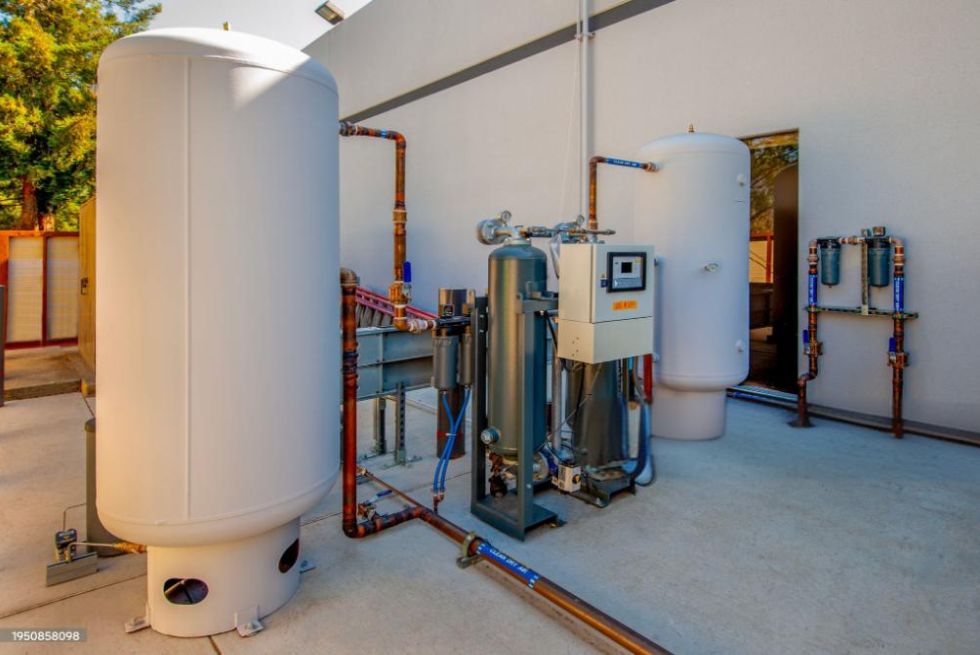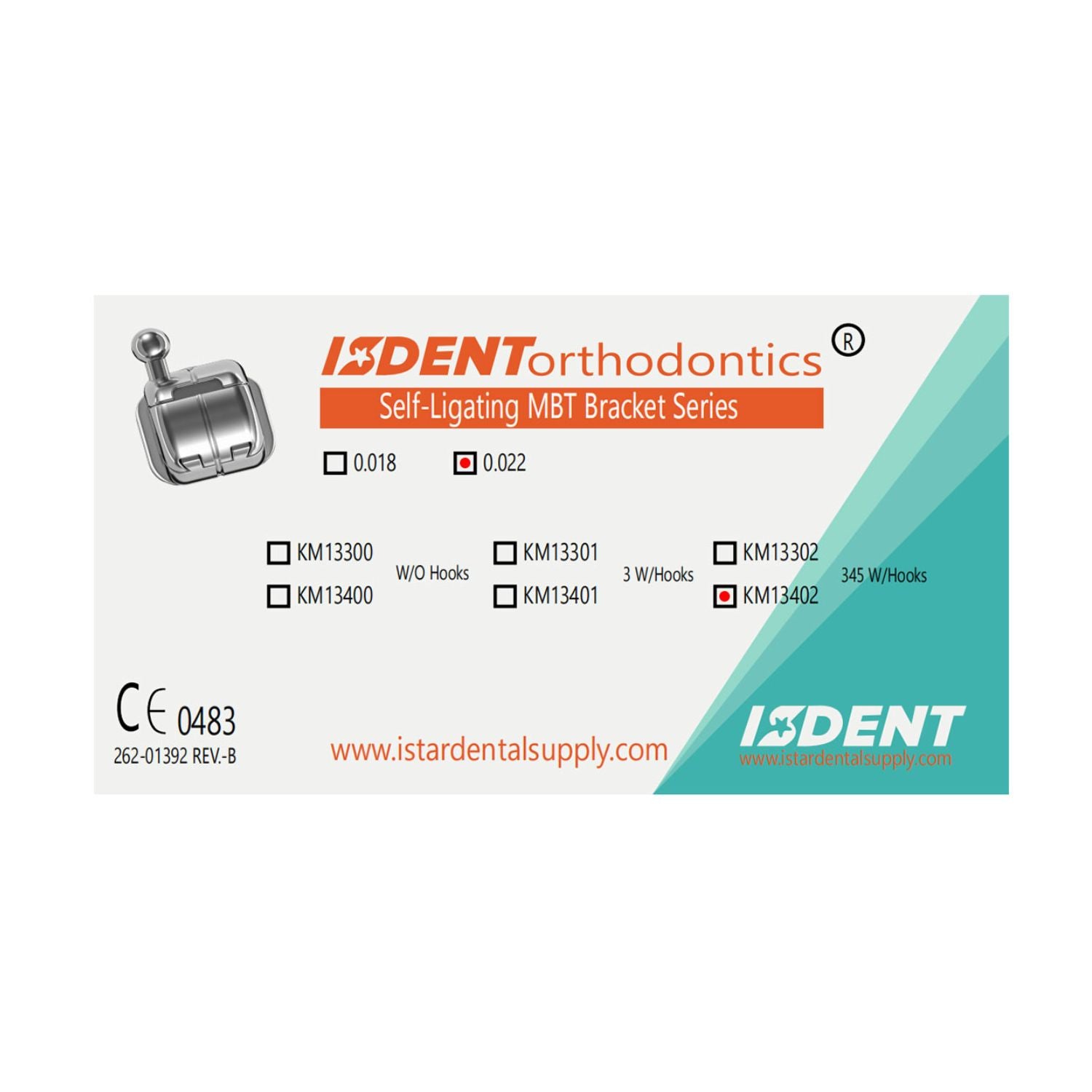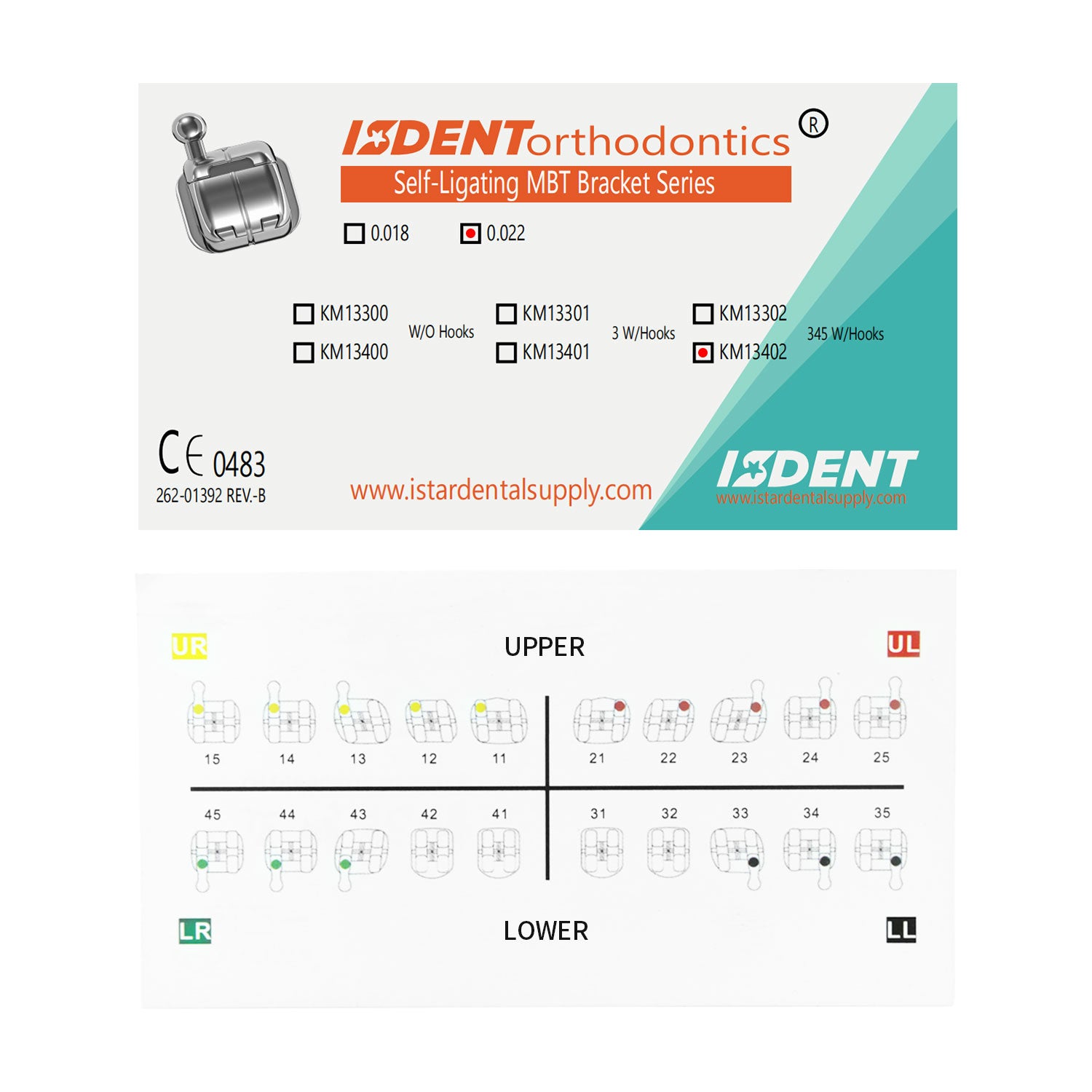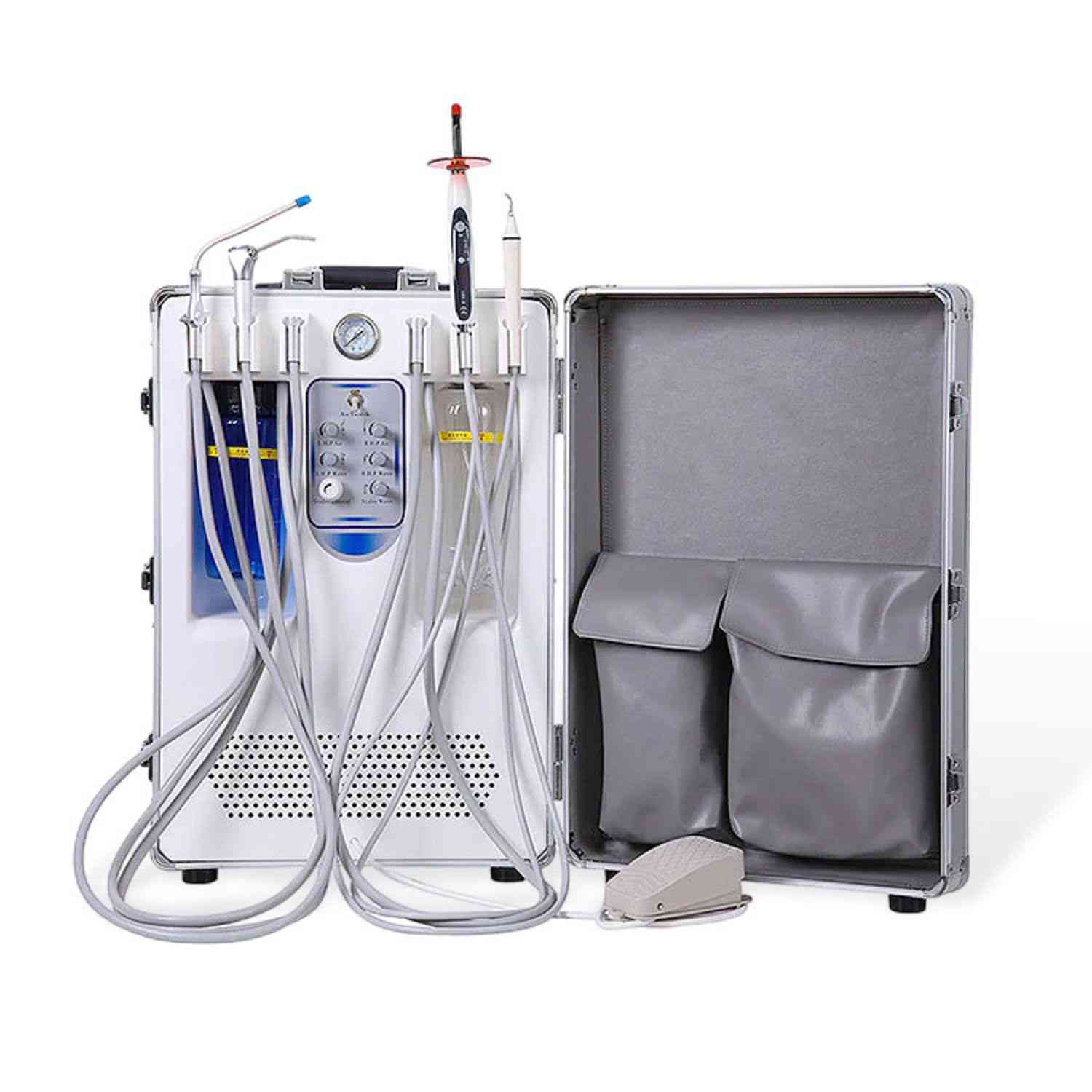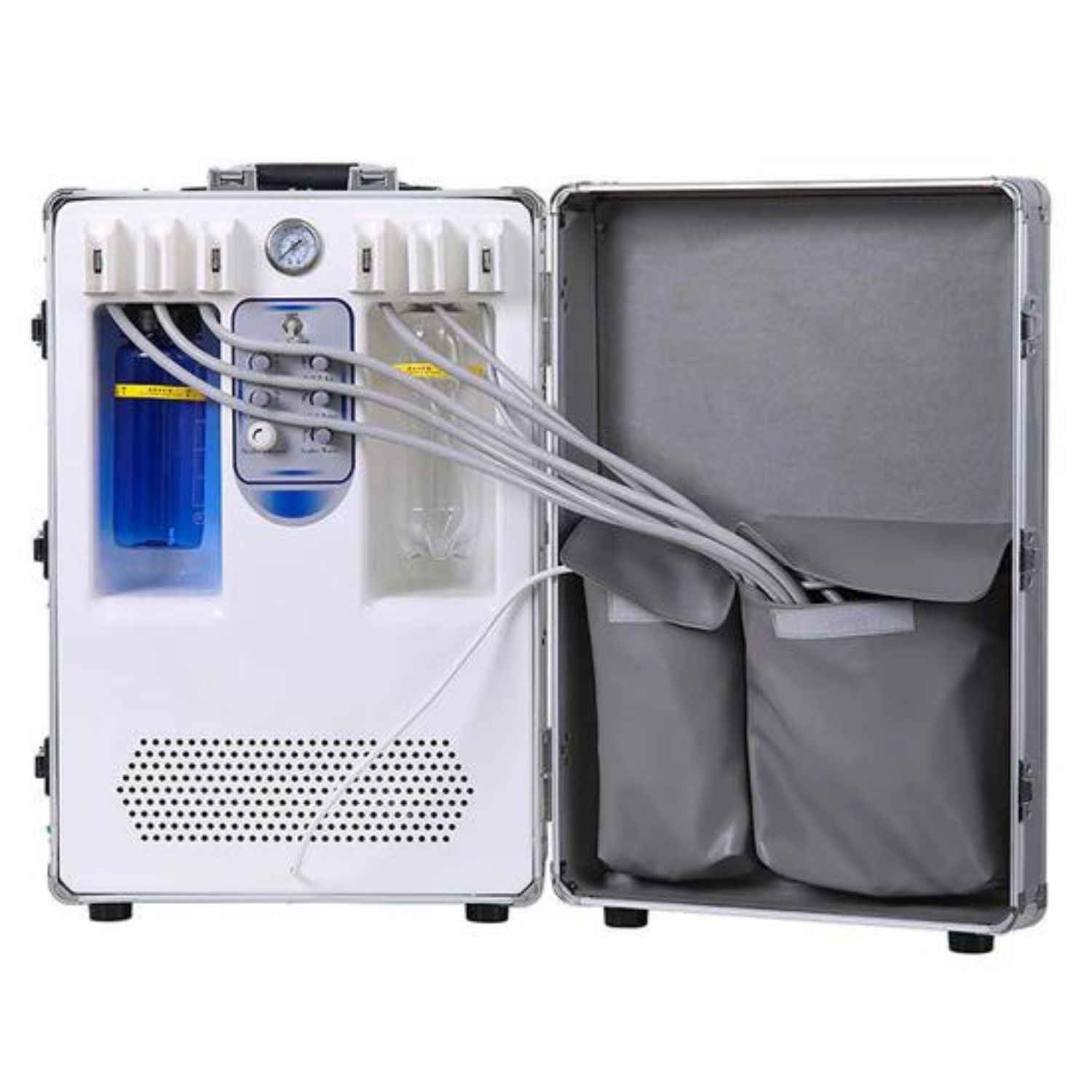Optimizing Your Dental Practice with a Properly Designed Compressor Room: Ensuring Clean Air and Efficient Working Conditions
This article provides a comprehensive guide to designing and maintaining a compressor room for your dental practice, ensuring clean air, optimal performance, and longevity of your equipment. We'll cover essential factors from initial setup to ongoing maintenance, helping you create a safe, efficient, and productive environment. We, at ISTAR Dental Supply, understand the critical role a well-functioning compressor plays in a dental setting.

1. Why is a Dedicated Compressor Room Important for Dentists?
A compressor is the heart of many dental operations, providing the compressed air needed to power handpieces, air polishers, and other essential equipment. Having a dedicated compressor room isolates noise, heat, and potential contaminants, creating a safer and more comfortable environment for both staff and patients.
Isolating the compressor also improves the working conditions within the main clinical area. A well-designed compressor room simplifies maintenance and troubleshooting, minimizing downtime and maximizing the productivity of your practice. ISTAR Dental Supply, as dental supply manufacturing plants for products, can advise on choosing the right compressor for your needs.
2. What are the Key Factors in Air Compressor Room Design?
Air compressor room design includes considerations for size, ventilation, foundation, accessibility, and the type of compressor being used. The goal is to create optimal working conditions for the compressor and to ensure a supply of clean air.
Key factors include sufficient space for the compressor, air receiver, and any auxiliary equipment such as pumps and dryers. Proper ventilation is crucial to prevent overheating, and the foundation must be strong enough to support the weight and minimize vibration. Accessibility for maintenance is also essential.
3. How to Determine the Correct Size for Your Compressor Room?
The size of your compressor room depends on the size and number of compressors, the air receiver, and any additional equipment like dryers. It's also important to allow for enough space around the compressor for airflow and maintenance access.
Consider future expansion needs. A slightly larger compressor room now can accommodate upgrades or additional equipment in the future. Allow sufficient floor space and, if necessary, utilize existing space to maximize efficiency. ISTAR Dental Supply can advise on correctly sizing your room.

4. What are the Best Practices for Compressor Installation?
Compressor installation should be carried out by qualified technicians, following the manufacturer's instructions. Installing the compressor on a level and stable foundation is essential. Consider using vibration dampers to minimize noise and movement.
Ensure that the electrical supply is adequate for the compressor's requirements and that all connections are properly made. Place the compressor in a manner that ensures easy access for maintenance. Dental compressors are essential.
5. Ensuring Clean Intake Air: Why is it Crucial?
The quality of the intake air directly impacts the quality of the compressed air and the lifespan of the compressor. Clean intake air is free from dust, dirt, corrosive fumes, and other contaminants.
Using a pre-filter on the air intake can help remove larger particles. For installations in areas with a high dust concentration, a more advanced filtration system may be necessary. Ensure the air intake is located away from potential sources of contamination, such as exhaust vents. The intake air must be as clean as possible.
6. How to Optimize Ventilation in Your Compressor Room?
Proper ventilation is vital to prevent overheating of the compressor. Air-cooled compressors release a significant amount of heat, which needs to be removed from the compressor room. The amount of ventilation air required depends on the size and type of compressor.
Consider using thermostat-controlled fans to regulate the temperature. Ensure that there is a ventilation inlet opening and an exhaust vent, ideally positioned to create airflow across the compressor. Natural ventilation may be sufficient in some cases, but mechanical ventilation mechanisms are often necessary. It's also crucial to make sure that the pressure drop caused by ducts or filters is minimized. An outer wall louver is often best.

7. The Importance of a Stable Foundation and Vibration Control.
A compressor generates vibration during operation, which can be transmitted to the building structure. A stable foundation helps to absorb this vibration and minimize noise.
A concrete floor is usually the best option. In some cases, using a plinth can further improve stability and reduce vibration. Ensure that the foundation is level and can support the weight of the compressor and any auxiliary equipment such as pumps. A solid soil base is necessary.
8. Choosing the Right Compressor: Air-Cooled vs. Water-Cooled.
The choice between air-cooled or water-cooled compressors depends on factors such as the size of the compressor, the ambient temperature, and the availability of a suitable water supply. Air-cooled compressors are generally simpler to install and maintain.
Water-cooled compressors may be more efficient in warmer climates. Consider the overall cost of ownership, including installation, energy consumption, and maintenance, when making your decision. The compressor types available are vast.
9. How to Best Plan the Compressor Rooms for Service and Maintenance Access?
Easy access for service and maintenance is essential to ensure the long-term reliability of your compressed air system. The compressor room should be large enough to allow technicians to work comfortably around the equipment.
Provide adequate lighting and ensure that all components, including the compressor, air receiver, dryer, and filters, are easily accessible. Centralization is key when planning. Consider the need for lifting equipment, such as a forklift truck, for larger compressors. Make sure that the heaviest components are accessible.

10. What role does Auxiliary Equipment like a Dryer play in the Compressed Air System?
A dryer is a critical component of a compressed air system, removing moisture from the air before it reaches your dental equipment. Moisture can damage handpieces and other instruments, leading to costly repairs and downtime. It helps ensure high efficiency and protection.
There are different types of dryers, including refrigerant dryers and desiccant dryers. The choice depends on the specific requirements of your practice. A properly sized and maintained dryer is essential for protecting your investment in dental equipment. It improves the productivity. ISTAR dental offers a wide range of reliable products.
FAQs
-
What is the ideal temperature for a compressor room?
The ideal temperature range is generally between 10-29°C. Maintaining a temperature within this range prevents overheating and ensures optimal performance of the compressor. In colder climates, it might be necessary to keep the room to 7–10°C.
-
How often should I service my dental air compressor?
The service frequency depends on the manufacturer's recommendations and the usage of the compressor. However, a general guideline is to perform routine maintenance, such as checking oil levels and filters, at least every three months. A more comprehensive service should be performed annually.
-
Can I install my dental compressor outdoors?
While outdoor installation is possible, it is generally not recommended. Compressors are sensitive to temperature extremes, moisture, and contaminants. If an alternative area is not available, the compressor should be installed in a weatherproof enclosure that provides adequate ventilation and protection from the elements. Suction inlets should be covered.
-
Why does a dental air compressor need to have oil removed from the compressed air?
Oil-lubricated compressors introduce a small amount of oil into the compressed air stream. While this oil lubricates the compressor's internal components, it's undesirable in dental applications. Oil-free air is essential for patient safety and to prevent damage to sensitive dental equipment.
-
What should be considered when selecting a dental compressor's pipe dimensions?
The pipe diameter should be sufficiently large diameter to minimize pressure drop. A significant pressure drop reduces the efficiency of the compressed air system. Consult with a compressor specialist or refer to the manufacturer's guidelines to determine the appropriate pipe size for your compressor and the length of the pipe run. The inlet and design is vital.
- How do I prevent the build-up of hazardous fumes within the compressed air system?
To avoid the build-up of dangerous fume collections, make sure your compressor is positioned far from sources of pollutants. Regular maintenance should include cleaning and filter changes. Explosive substances are dangerous.
- What is the impact of altitude on the performance of a compressor?
The density of air decreases at higher altitudes. Due to this, a compressor will deliver less mass flow of air at higher altitudes. This drop in performance must be considered when sizing a compressor for use at altitude.
Summary
Here's a bullet-point summary of the most important things to remember:
- A dedicated compressor room is crucial for isolating noise, heat, and potential contaminants.
- Proper air compressor room design includes considerations for size, ventilation, foundation, and accessibility.
- Clean intake air is essential for the longevity and performance of the compressor.
- Adequate ventilation is vital to prevent overheating.
- A stable foundation minimizes vibration and noise.
- Choose between air-cooled or water-cooled compressors based on your specific needs.
- Ensure easy access for service and maintenance.
- A dryer is essential for removing moisture from the compressed air.
- Follow the manufacturer's recommendations for installation and maintenance.
- Consider the importance of any auxiliary equipment such as pumps.
- Consider hiring a professional for the compressor installation.
By following these guidelines, you can create an optimal environment for your dental compressor, ensuring a reliable supply of clean air, promoting increased productivity, and protecting your valuable equipment. ISTAR Dental Supply is here to support you with high-quality compressors and expert advice. Our expert application knowledge will allow you to explore our solutions. For medium and high pressure applications, we can help. Our compressors now come sturdy and equipped to suit different needs. With the possibility of using complete compressor plants, we're here to help. Whether it's a rotary or multi-purpose solution, with products dimensioned to handle your needs, we have the answer. Together with electricity, water and gas, we can help improve your practice. Follow this guide to get optimal productivity. For new installations, or if you need minimum for advanced products, contact ISTAR. If you have a heat build-up problem, we can help, and if our products are used on installations, you can rest assured. If you have any questions just click the button and we'll get back to you. If there is ever a need arise, we'll be there. We offer wide range of reliable products. Our compressor's are of the highest quality. Dental Unit and Dental Chair are also important when considering your practice set up. Our Dental Suction products are also top of the range.

